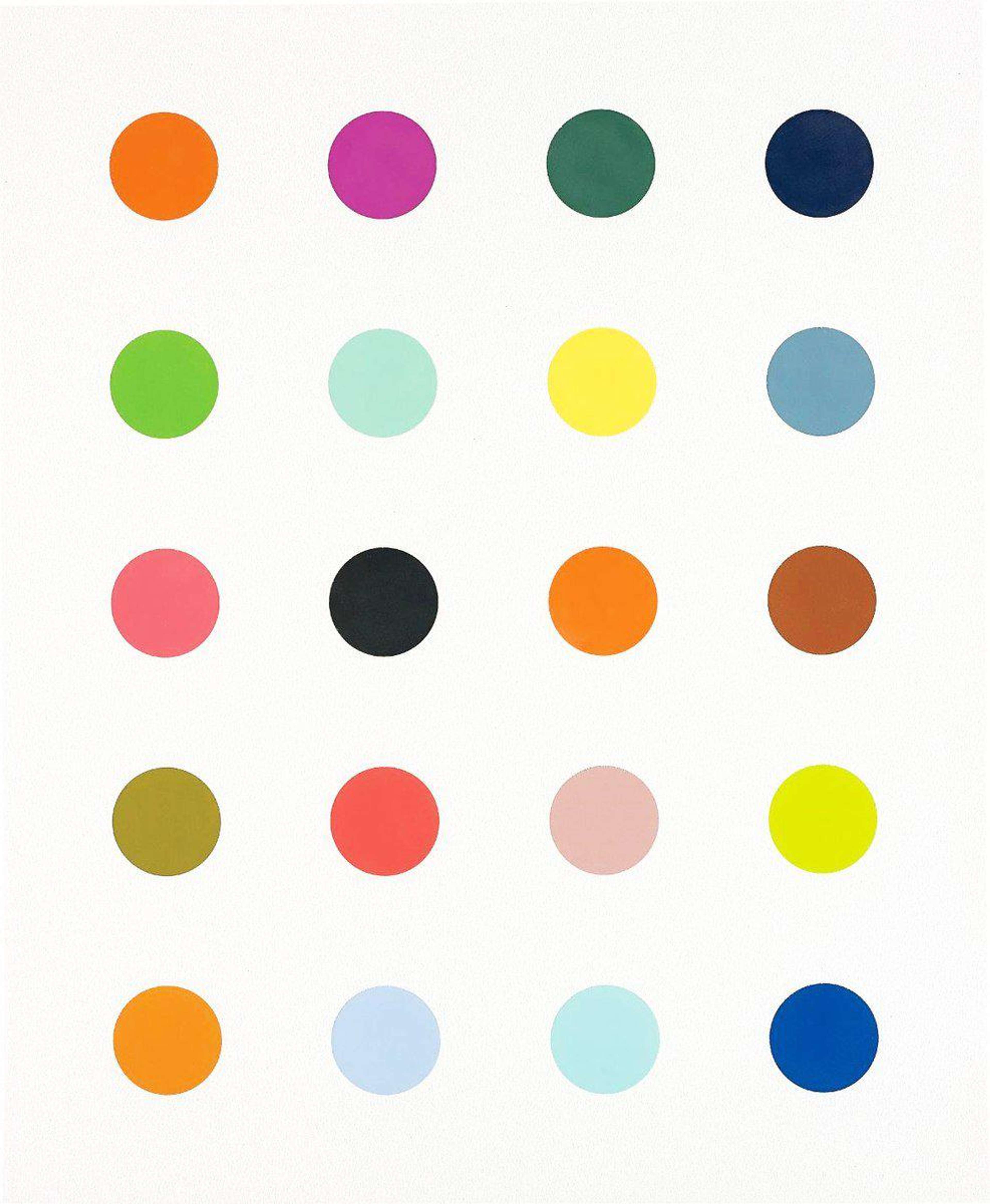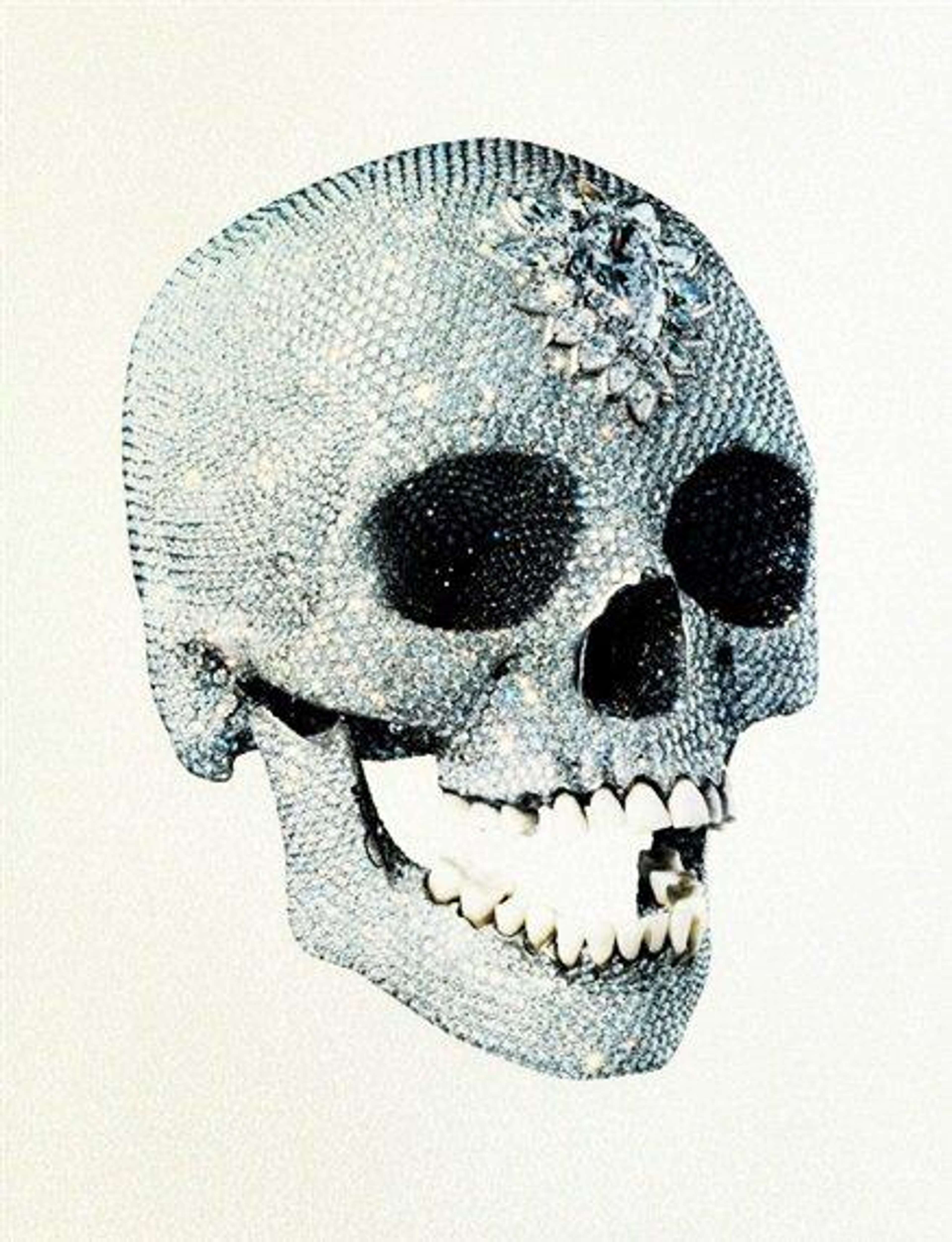The King of Controversial Art

 Image © Tate Modern / Mother and Child (Divided) © Damien Hirst 1993
Image © Tate Modern / Mother and Child (Divided) © Damien Hirst 1993
Damien Hirst
677 works
Damien Hirst is a name that is synonymous with Contemporary Art, and for good reason. The British artist has made a significant impact on the art world with his unique style and controversial works. In this article, we will explore Hirst's life and career, his impact on contemporary art, and his legacy as an artist.
Who is Damien Hirst?
Born on June 7, 1965, in Bristol, England, Hirst is a British artist known for his provocative and controversial works that explore themes of life, death, and mortality. He gained notoriety in the 1990s for presenting dead animals in formaldehyde as art and using ready-made objects to challenge traditional notions of art.
The Young British Artists and Hirst's Early Career
Hirst attended Leeds College of Art and Design before enrolling at Goldsmiths College in London from 1986 to 1989. During his time at Goldsmiths, he curated a groundbreaking exhibition titled Freeze, which showcased the work of his fellow classmates who later became known as the Young British Artists (YBAs). Hirst's role in Freeze and his subsequent rise to fame as an artist and provocateur solidified his place as one of the most influential figures in the Contemporary Art world. His involvement with the Young British Artists movement set the stage for his recognition as the king of controversial art.
Between the late 1980s and early 1990s the YBAs emerged in the UK earning a reputation for their experimental, polarising artwork. While criticised for their shock value and perceived lack of technical skill, the YBAs garnered critical acclaim and popularity for their avant-garde approaches to art-making. Hirst was a key figure in the movement, with his works, such as The Physical Impossibility Of Death In The Mind Of Someone Living and Mother And Child Divided, emblematic of the YBAs' fascination with popular culture and death.
Hirst's Most Controversial Artworks: The Formaldehyde Shark and Beyond
Throughout his monumental oeuvre, Hirst’s artworks have always had an overtone of controversy. The YBA’s artwork is often gritty, and Hirst thrives on the arguments and 'mixed reviews' his works generate. From his formaldehyde works to the performative burning of his own artworks, the contention of Hirst’s works in the media is a crucial part of the art itself. Indeed, any press is good press: especially in the art world.
Here are some of the most controversial moments in Hirst’s artistic career thus far:
 Image © The Physical Impossibility of Death in the Mind of Someone Living © Damien Hirst 1991
Image © The Physical Impossibility of Death in the Mind of Someone Living © Damien Hirst 1991Hirst’s Natural History & Formaldehyde Animals
Hirst's fascination with human anatomy was an influence seen in his artwork, including his famous Natural History series featuring preserved animals in glass tanks. One of Damien Hirst's most controversial artworks is The Physical Impossibility Of Death In The Mind Of Someone Living, also known as The Shark, consisting of a preserved tiger shark submerged in formaldehyde in a glass tank. It was first exhibited in 1991 and immediately gained attention for its shock value and the high price tag - selling for $8million to a collector. Some critics argued that the artwork was nothing more than a sensationalist gimmick, while others praised Hirst’s ability to challenge traditional ideas about art and beauty.
Find out more about Hirst’s preoccupation with death and religion here.
Hirst's interest in the fragility of life continued to be a theme in his later works throughout his career. In A Thousand Years, he created a glass vitrine containing a rotting cow's head, flies, and a bug zapper. The installation represented the cyclical nature of life and death, with the flies being born, living, and dying as they were attracted to the decomposing head and ultimately killed by the zapper. Hirst's controversial artworks sparked debate and discussion about the role of art in society, with some arguing that they were nothing more than attention-seeking stunts, while others saw them as groundbreaking and thought-provoking works of art.
For The Love Of God
In For The Love Of God, we see a platinum human skull set with over 8,000 diamonds. The artwork was first exhibited in 2007 and caused a media frenzy after selling to a group of investors for $100 million. Some considered the artwork as being a tasteless display of wealth, while others saw it as a statement about the value of life and death in contemporary society. For The Love Of God remains one of Hirst's most iconic and divisive artworks to date, showcasing his willingness to push boundaries and challenge traditional ideas about art and culture.
Explore 10 Facts About Damien Hirst’s For The Love Of God here.
The Currency and The Beautiful Paintings
In two of Hirst’s recent collaborations with Heni, the artist has toyed with new technologies to make and deploy his artworks. The Currency, a limited edition series released with Heni in 2022, presented an edition of 10,000 of his iconic Spot Paintings with a corresponding edition of 10,000 NFT artworks. Upon purchase however, the collector could only choose to keep one format of these artworks. They could keep the physical artwork and forfeit the NFT, or keep the NFT and watch Hirst literally burn the physical artwork in what can only be described as a performance art piece.
His most recent collaboration with Heni, titled The Beautiful Paintings, invited collectors to design their own Spin Paintings using a machine learning generative algorithm. The algorithm, produced by the Heni data science team with Hirst, is a testament to the increasing dominance of AI in the art world. The entire edition sold for an astounding $20,994,000 (before applicable taxes) - a figure made all the more phenomenal considering Hirst’s final involvement is limited to the signing of the Giclée prints.
Hirst's Technique and Style: From Readymades to Spot Paintings
Fearless, bold, irreverent, unconventional. Hirst's technique and style is influenced by his multifaceted approach to art-making. His technique and style has evolved throughout his career, reflecting his ongoing experimentation and exploration of new materials and forms. In his early works, Hirst was known for his use of readymade objects and dead animals presented in glass vitrines. They challenged conventional ideas about beauty and taste, and sparked controversy and conversation within the art world. Since these early works, Hirst’s works and exhibitions have continued to provoke - giving Hirst his scandalous reputation in Contemporary Art.
As his career progressed, Hirst became known for his use of bold, vibrant colours and his exploration of pattern and repetition. His Spot Paintings, which feature grids of brightly coloured dots, have become iconic representations of his style and are among his most recognizable works. Hirst's use of repetition and seriality in his spot paintings has been seen as a nod to the work of artists like Andy Warhol and Donald Judd, who also explored these concepts in their own work.
Hirst however was criticised for the commercialization of his art and his reliance on a team of assistants to create many of his works. Despite these claims, Hirst's impact on the art world remains significant, and his ongoing experimentation and willingness to push boundaries continue to inspire and influence a new generation of artists.
Hirst's Influence and Impact on Contemporary Art
Hirst's influence on the art market and art collecting cannot be overstated. His early career was marked by numerous auctions and exhibitions, which established him as a leading figure in the contemporary art world. In 2008, Hirst made headlines when he bypassed traditional galleries and auctioned off his works directly at Sotheby's, in an event titled Beautiful Inside My Head Forever. The auction, which featured over 200 works, raised over $200 million and set a new record for a single-artist auction.
Critics argue that his works are overpriced and lack artistic merit, while others question the ethics of his use of dead animals and pharmaceuticals. Hirst has also been accused of catering to the tastes of wealthy collectors and contributing to the commodification of art. While Hirst's works may not be to everyone's taste, they have undoubtedly left an indelible mark on the art world and will continue to be studied and debated for years to come.
Hirst's Auctions and Exhibitions: The Rise of a Star
Hirst's rise to prominence in the art world was accompanied by a significant increase in demand for his work. In the 1990s, he began selling his artwork through major auction houses. His auction sales consistently set records, with his iconic piece The Golden Calf selling for $18.6 million at a Sotheby's auction in 2008, making him the most expensive living artist at the time. Hirst's work was also featured in numerous exhibitions around the world, including retrospectives at the Tate Modern in London and the Guggenheim Museum in New York.
Hirst's auctions and exhibitions not only solidified his position as a major figure in the contemporary art world, but also sparked public debate about the role of money in art. Some critics argued that Hirst's success was due more to his ability to market himself and his work than to any inherent artistic ability. No better is this fact expressed than in the recent sale of The Beautiful Paintings with Heni. The works, which are not actually paintings but Giclée prints or NFTs, fetched $20,994,000.
Despite the controversies, Hirst's auctions and exhibitions continued to draw large crowds and command high prices. His work remains popular among collectors, and his influence on the Contemporary Art world continues to be felt to this date.
Hirst's Legacy: The Power of Controversy in Art
Many of Hirst's later works, such as his Spot Paintings, are seen as formulaic and lacking the conceptual depth of his earlier pieces. Additionally, his tendency to produce multiple copies of his works has been viewed by some as a cynical attempt to capitalise on the art market. In this sense, Hirst's legacy may be tarnished by his role in commodifying Contemporary Art. However, if Warhol and the titans of Pop Art taught us anything: money is art - a legacy Hirst preserves in his controversial oeuvre.
Another criticism of Hirst's career is his reliance on shock value and spectacle. Many of his most famous works, such as the shark and the diamond skull, are notable for their ostentatiousness rather than their artistic merit. Critics argue that Hirst's emphasis on the sensational has come at the expense of more nuanced and thoughtful explorations of art and its role in society. While some of Hirst's early works, such as the Natural History series, were innovative and thought-provoking, others have been seen as shallow and gimmicky.
The Reigning King of Controversial Art
On the other hand, Hirst's influence on contemporary art cannot be denied. He was a central figure in the YBA movement, which reshaped the British art scene in the 1990s. Hirst's use of readymades and found objects, as well as his interest in death and mortality, have been influential on subsequent generations of artists. His work has been exhibited in major museums and galleries around the world, and he has been recognised with numerous awards and honours. While his later works may not be as well-regarded as his earlier pieces, Hirst's impact on the art world remains significant. Well-regarded or not, even a print edition of AI-generated artworks can sell for over $20million when Hirst is involved. Whether his legacy will ultimately be seen as positive or negative in the future is a matter of debate, but there is no question that he has left an indelible mark on Contemporary Art and has made a pretty penny in the process.










